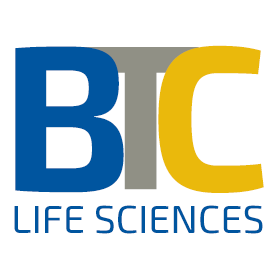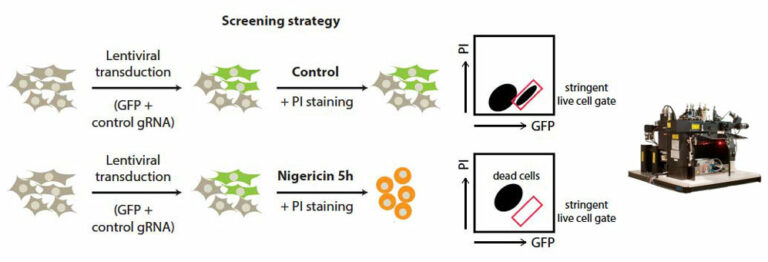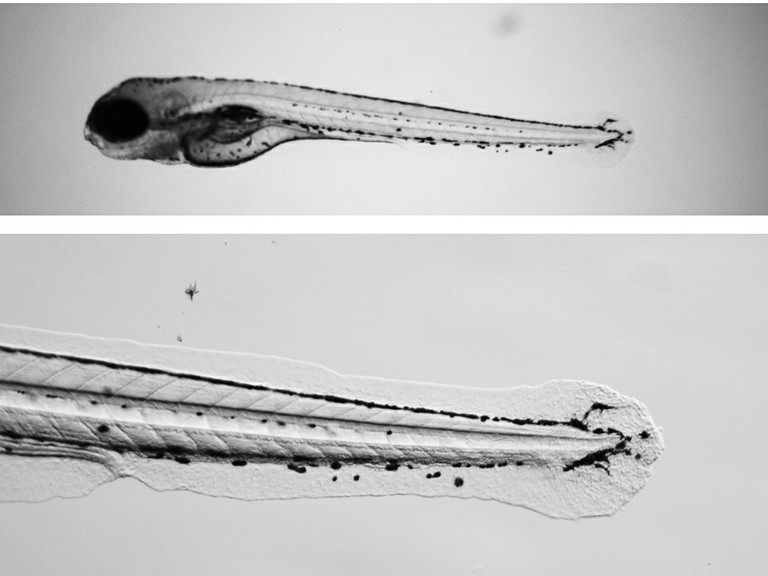Control hub for skin inflammation discovered
Study by the University of Bonn identifies new signaling pathway to combat UV damage and infections
Inflammatory reactions in the skin can reduce damage from UV radiation or infections, but can also result in painful symptoms such as sunburn. A recent study at the University of Bonn and the University Hospital Bonn has now identified a molecular control which integrates these stress signals. The results have been published in the Journal of Experimental Medicine.
As the largest organ of the human body, the skin literally provides a major barrier exposed to environmental stimuli and pathogens. Painful inflammation can be mounted if this barrier is compromised – as anyone who has ever had a sunburn knows. But exactly how this is triggered was not understood in detail until now. “In our study, we took a closer look at the processes involved,” explains Prof. Dr. Florian Schmidt, who heads a research group at the Institute of Innate Immunity at the University Hospital Bonn.
UV light is very high in energy. When it hits the skin, it can therefore damage important cellular molecules, sparking inflammation as a common consequence. However, it was unclear how this exactly happens. “We have now been able to show that a known cellular stress signaling pathway can trigger these inflammatory responses,” explains Schmidt, who is also a member of the Transdisciplinary Research Area (TRA) “Life and Health” and the ImmunoSensation2 Cluster of Excellence at the University of Bonn.
The cell’s own “engineering offices,” the ribosomes, normally assemble proteins based on the instructions in the genetic material. When this is impaired due to UV damage, they sound the alarm: They trigger the so-called ribotoxic stress response. It has been known for years that this causes a signaling cascade resulting in the activation of an enzyme called p38. “Our research shows that p38 molecularly modifies NLRP1, a critical switch for inflammation in the skin, and thus activates it in a novel way. This initiates the assembly of inflammasomes from many molecular building blocks.”
Inflammasomes are powerful weapons of the innate immune system. Among other things, these complex molecular machines can convert inactive messenger substances for inflammation into their active form. At the same time, they ensure that numerous holes are formed in the cell membrane. This allows messenger substances to reach the outside and thus call the body’s own defense forces to its aid. Ultimately, the holes lead to the death of the cell: At some point, it practically explodes and empties its contents into the tissue. The molecules that are now abruptly released from within the cell are another warning sign for the immune system. […]
Participating Core Facilities: The authors acknowledge the support from the Flow Cytometry, Microscopy, and Nanobodies Core Facilities.
Participating institutions and funding:
In addition to the University Hospital of Bonn and the University of Bonn, the University of Melbourne (Australia) and Boston Children’s Hospital (USA) were involved in the study. The work was funded by the German Research Foundation (DFG) and the Klaus Tschira Boost Fund.
Publication: L.-M. Jenster, et al.: P38 kinases mediate NLRP1 inflammasome activation after ribotoxic stress response and virus infection; Journal of Experimental Medicine; DOI: 10.1084/jem.20220837







